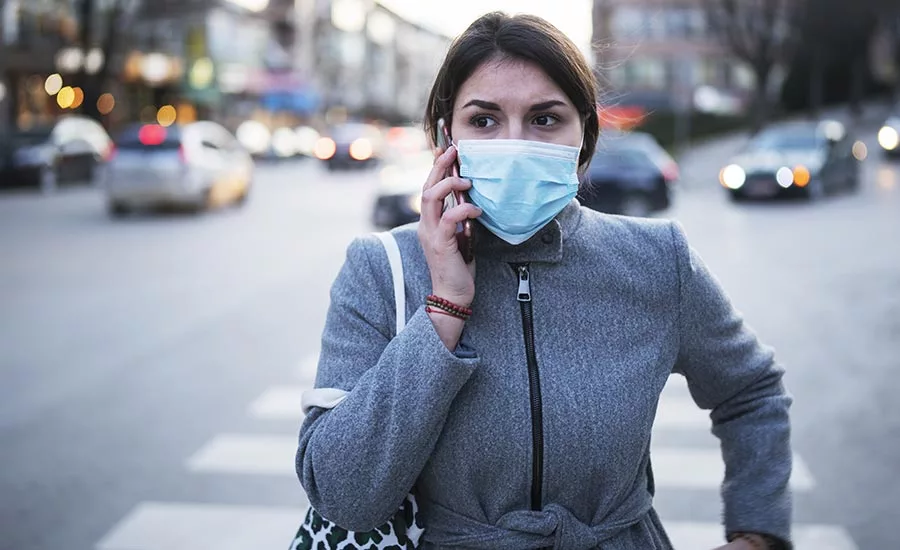Straight Talk about Face Masks and Face Recognition

Facial recognition systems are an excellent way to improve security and enable touchless access control in buildings and facilities in this new world of social distancing. As experts increasingly recommend face masks to limit the spread of COVID-19, it’s natural to question how this might effect the performance of facial recognition algorithms.
It’s true that when more facial features are available as recognition data points, face recognition accuracy rates go up. However, these types of face occlusions are fairly typical in real-world use cases — somebody wearing sunglasses, a scarf, a low hat, or with their face not turned directly toward the camera. When any portion of the face is not visible, a facial recognition algorithm must focus on whatever face landmarks it can see in order to determine an accurate match. It’s a process that requires training and tuning to get right, but a resilient algorithm can adapt when it sees a partially occluded face and still deliver excellent results.
Occlusion detection — recognizing when a face is covered — has been a feature of professional face detection platforms for some time, so it’s a natural evolution to teach an algorithm how to recognize a mask and then work with the partial face information it can discern to provide a match to the database of known faces. As preventative masks become more common around the globe, detection and accurate recognition of partially occluded faces is more important than ever if facial recognition systems are to continue providing enhanced security and convenience. Facial recognition vendors are continuing to enhance occlusion logic further to ensure we can maintain high accuracy rates and strong performance.
When deployed commercially, accurate recognition under occluded conditions is valuable and in some cases life-saving:
- Healthcare worker, and other authorized individuals can be recognized and move through secured areas without removing personal protective equipment.
- Essential service providers can continue to deliver products and services without delay.
- Security threats will not go unrecognized, and responses will not be delayed.
If a match can’t be made, the system can be set up to automate response procedures that ensure safety and security protocols are upheld. For example, different matching thresholds could be required when occlusions are detected, a multi-factor authentication workflow could be initiated, or security personnel could be notified when a person is not recognized because of a face mask or other occlusion.
Straight Talk on Mask-Immune Claims
In these difficult times, many facial recognition vendors are excitedly sharing news that they are “mask immune” — able to recognize faces with the same accuracy as when people are not wearing masks. That may be true when their sample size is small. But what we know about human faces is that they are all different, and as your sample size (enrolled database) grows, the range of represented facial traits and likelihood that someone with somewhat similar features will appear in the database increases. Some faces have especially unique traits around the eyes or nose, while others may have more unique mouths or jawlines. Therefore, some people will be more easily recognized when the upper half of their face is visible, and others the lower half. Because of this, not all people may experience the same level of accuracy even when they are occluded by similar objects.
Accuracy is always complex, with multiple variables contributing: the quality of the enrolled face image, the impact of lighting and other environmental variables, the data used to train the algorithm. It’s important to be honest about these limitations and to acknowledge that the highest accuracy can be achieved when a system understands how a person looks when wearing a mask. For secure access, and other opt-in use cases, adding a reference image of the individual wearing a mask to the database will boost accuracy.
No Mask Alerts
As face masks become an important tool to combat COVID-19, organizations may wish to be notified when individuals are not wearing a mask. This type of logic is not present in all recognition systems. Ask your facial recognition vendor if they currently support recognizing occlusion and if they can program varying “if this, then that” workflows when masks are, or are not present.
Now, more than ever, it’s important to equip end users with high-performance software and systems that adapt to rapidly changing environments and evolving needs. It’s a reality we’re becoming all too familiar with in this time of crisis.
Looking for a reprint of this article?
From high-res PDFs to custom plaques, order your copy today!






